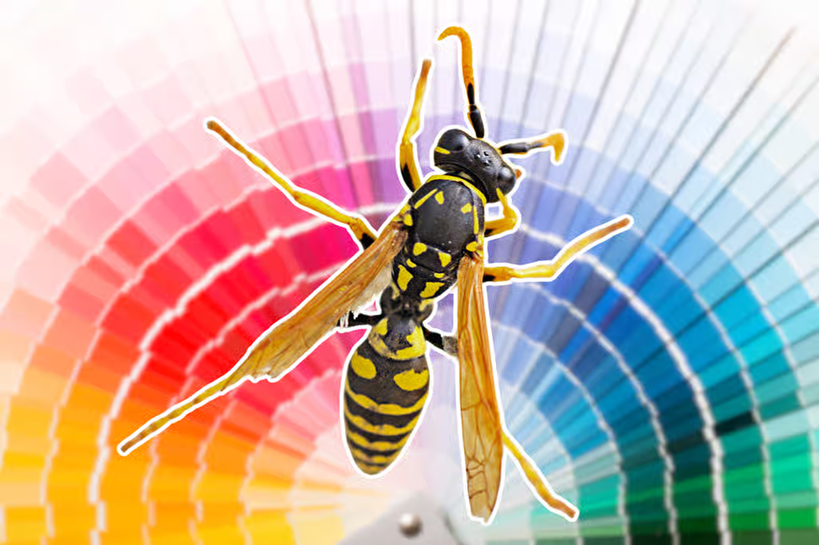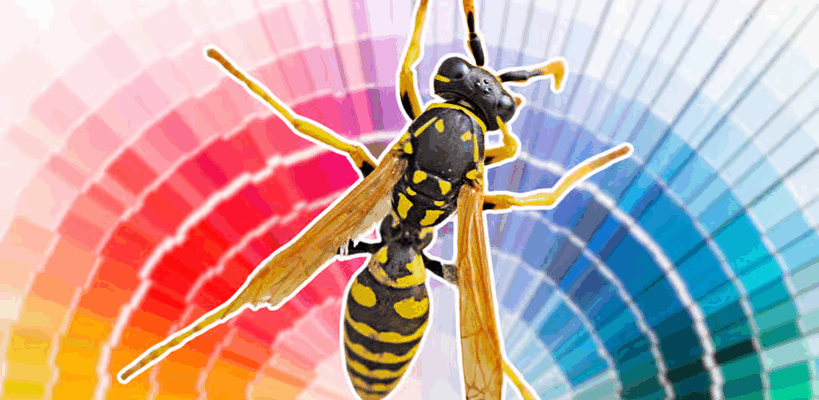As the warm weather returns, so do wasps—buzzing around picnics, gardens, and outdoor meals. Many people claim that certain colors attract them, while others help keep them away. But what does science say?
 🎨 What Science Says About Wasp Vision
🎨 What Science Says About Wasp Vision
Wasps, like most insects, don’t see colors the same way humans do. Their color perception is based on three types of photoreceptors, sensitive to ultraviolet (UV), blue, and green light (source: Briscoe & Chittka, 2001). They cannot see red, but are especially attracted to:
Yellow, white, and pink hues, which they associate with flowers and food sources.
Bright or reflective surfaces, as these often reflect UV light, which wasps can easily detect.
A study by Kelber et al. (2002) showed that wasps can be trained to associate specific colors with food, especially when they’re searching for nectar or protein.
✅ Colors That Attract Wasps
Yellow: High contrast in the UV spectrum, making it one of the most attractive colors to wasps.
White: Highly visible and reflective of UV light.
Light pink and violet: Flower-like tones that stimulate their interest.
Red: Although not well perceived, it can still attract wasps if associated with scent or food.
❌ Colors That Repel or Don’t Interest Wasps
Blue (especially light blue): Wasps react very little to blue, as it’s less associated with food.
Dark green and grey: These colors blend into natural surroundings and attract less attention.
Black: Not visually attractive, but can trigger defensive behavior, as dark colors resemble predators (like birds).
👚 Practical Tips to Avoid Attracting Wasps
Wear blue or dark green clothing when spending time outside.
Avoid yellow, white, or floral prints, especially during outdoor meals.
Don’t wear floral or fruity perfumes—smell matters just as much as color.
Use navy blue tablecloths or decorations to deter wasps during outdoor gatherings.
📚 Scientific References
Briscoe, A. D., & Chittka, L. (2001). The evolution of color vision in insects. Annual Review of Entomology, 46, 471–510.
Kelber, A., Vorobyev, M., & Osorio, D. (2002). Animal colour vision–behavioural tests and physiological concepts. Biological Reviews, 77(4), 513-563.
Peitsch, D., Fietz, A., Hertel, H., de Souza, J., Ventura, D. F., & Menzel, R. (1992). The spectral input systems of hymenopteran insects and their receptor-based colour vision. Journal of Comparative Physiology A, 170, 23–40.
